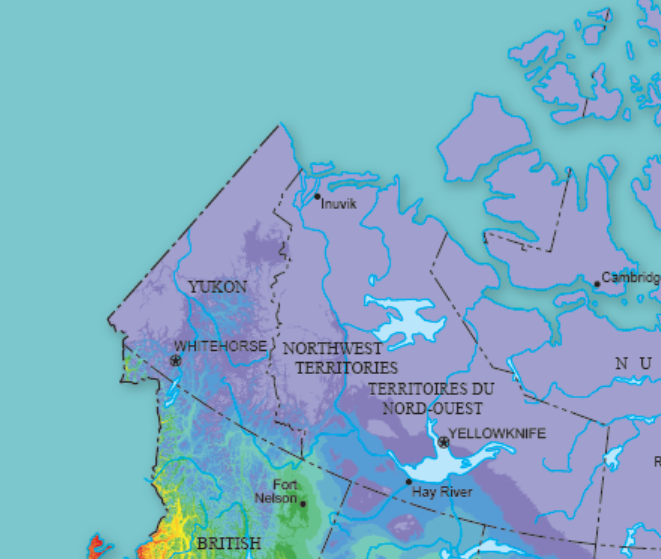Image from Natural Resources Canada
Characteristics of Yukon Planting Region
Yukon has a subarctic climate, with long, cold winters and short, warm summers. However, the summer daylight hours are exceptionally long—up to 20 hours of sunlight a day in June—creating powerful growing potential in a short period of time.
The average growing season lasts from late May to mid-September, offering around 90 frost-free days in the more temperate parts of the territory, such as Whitehorse and Dawson. Soil conditions can vary widely, with pockets of fertile land near river valleys and more acidic or rocky ground in upland areas.
The harsh climate means that only the hardiest of crops thrive outdoors, but those that do can grow quickly and vigorously thanks to the intense summer sun.

Challenges of Growing in Yukon
1. Extremely Short Growing Season
Even in Yukon's warmest regions, the growing season is brief. Frost can occur as early as September and as late as late May, making timing crucial.
2. Cold Soil Temperatures
Soils can take longer to warm up in the spring, which can delay planting. Raised beds or soil-warming techniques are often necessary to give crops a good start.
The Benefits of Using a Greenhouse in Yukon
Because of the region's unpredictable and brief outdoor growing conditions, greenhouses are incredibly valuable tools for Yukon gardeners. They offer a controlled environment where plants can thrive longer and more consistently.
1. Extend your Growing Season
-
Without a Greenhouse:
Gardeners are limited to a narrow summer window—usually under three months.
-
With a Greenhouse:
The season can begin in April and continue into October, depending on insulation and heating. This is especially beneficial for seedlings and long-season crops.
Yukon’s prolonged summer daylight is perfect for maximizing growth in greenhouses during the extended season.

Greenhouse from a customer in Yukon
2. Grow a Wider Variety of Vegetables Without a Greenhouse:
These cool-hardy crops generally perform best outdoors in Yukon’s climate:
|
Turnips Swiss Chard Spinach Radishes |
Lettuce Kale Beets Peas |
With a Greenhouse:
You can successfully grow a much wider selection of vegetables, including:
Recommended vegetables for greenhouse growing include:
|
Broccoli Brussel sprouts Cabbage Cauliflower Cucumbers Onions Leeks |
Cantaloupe Herbs Sweet Corn Eggplant Potatoes Carrots |
Bell Peppers Pumpkins Gourds Squash Zucchini Tomatoes Watermelon |


